8 Tidy Shrubs For Beautiful Fall Color
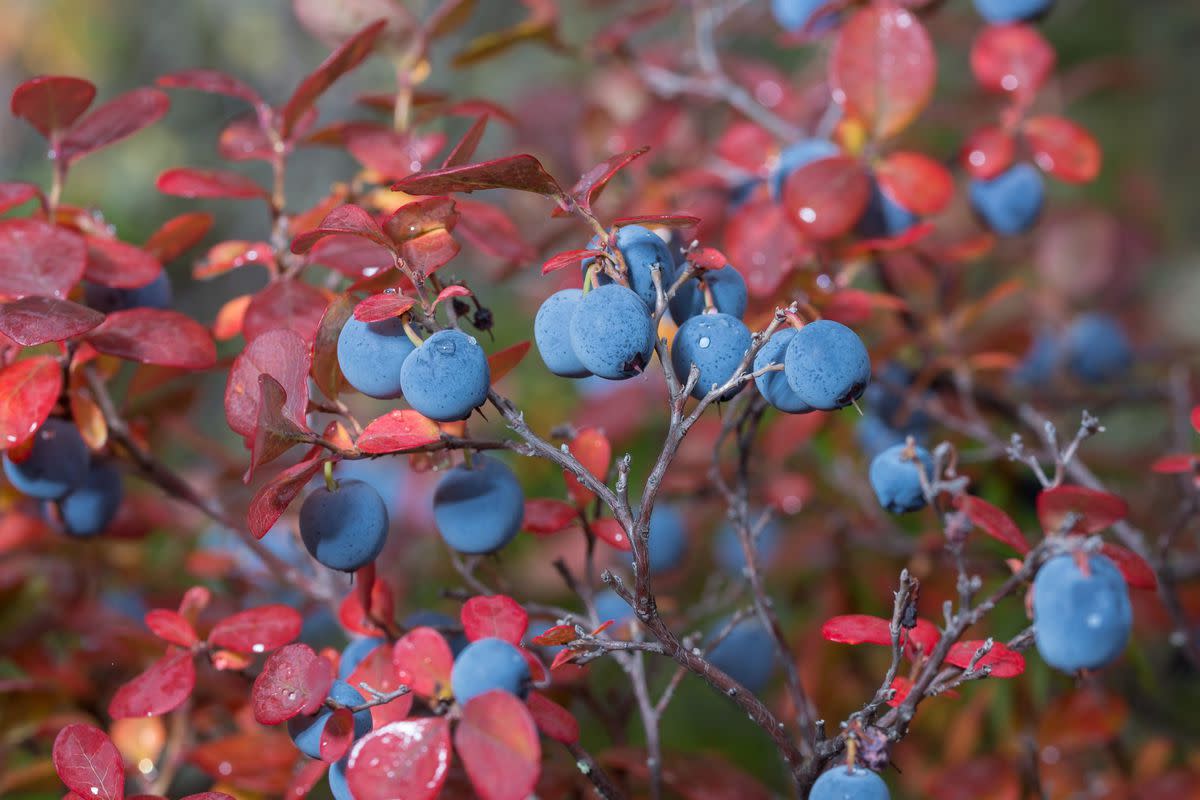
Andrei Berezovskii/Getty Images Think blueberry bushes are just for summer picking? Think again. These shrubs are a blaze with color come cooler months. Leaves change to red, orange, or yellow combinations that offer a welcomed bonus to the plant's summer fruit. Learn more.
Fall color doesn't have to mean a bunch of blowing and raking. With these tidy bushes, you can complement the foliage already in your yard with new bursts of seasonal hues—and without the raining down of spent leaves. Though we can't deny the magic of bright red foliage pouring from a maple in peak season. If you're looking to add even more fall color to your yard, stop looking up and start maximizing the greenspace at ground level.
"Fall is the perfect time to add shrubs and perennials, especially when it comes to statement plants," says Katie Tamony, CMO and trendspotter at Monrovia. "Statement plants elevate the garden from ordinary to extraordinary, giving the space a focal point." Tamony is quick to point out that fall planting also has the benefit of time. Springtime often sees harried home gardeners running to the garden center and praying for an afternoon of no rain in order to get the yard ready for spring. During the fall months, Tamony says you can take your time ensuring you've covered all your bases and have a design that you feel good about.
"Whether it's fall-blooming flowers, edible plants, or ornamental shrubs that deliver a color-rich finish to the year, the only limit to fall gardening is your imagination, says Jim Putnam, host and founder of HortTube with Jim Putnam on behalf of Southern Living Plant Collection and Encore Azalea. Here, Putnam and Tamony share their tips for planting shrubs for fall color, plus the best plants for the job.
How To Choose the Best Shrubs for Fall Color
"Many think of spring and summer as the 'gardening seasons' because it seems like that's when most plants offer their blooms," says Putnam. "But fall and winter can provide a stunning show of color that will truly extend the enjoyment of your yard through the year's coldest months." The trick is knowing how to do it. For Putnam, that means taking in the surroundings and making additions that highlight the foliage already in your yard. "In fall, the canopy above your yard is likely transitioning to beautiful hues of scarlet and gold," he says. "Select shrubs with foliage that will reflect and complement those colors." Putnam also urges home gardeners to look to the unexpected when it comes to fall color. Edible plants can be the most hardworking items in your garden. "A blueberry like Bless Your Heart Blueberry can do double-duty, providing fruit in summer and bright red foliage in fall," Putnam says. "Rosemary like Chef's Choice Culinary Rosemary is an evergreen herb that adds texture and wonderful fragrance to the landscape in fall—and can add seasoning to the Thanksgiving table."
The Best Shrubs for Fall Color
Evergreens
Let's start broad. It's important to think of your garden as a whole before you begin adding shrubs here and there. "To plan for your fall and winter color display, start by considering evergreens—and not just pines," Putnam suggests. "Stunning shrubs like nandina, cleyera, and holly lend year-round color to the garden. Many offer additional cool weather delights like color-changing leaves, bright berries, and elegant foliage." He advises looking at evergreens as the foundation of your landscaping. They make excellent borders and can provide color and structure year-round. "With these four-season plantings as your landscape's backbone, it becomes easier (not to mention more cost-efficient) to then layer in warm-season plantings and annuals," he says.
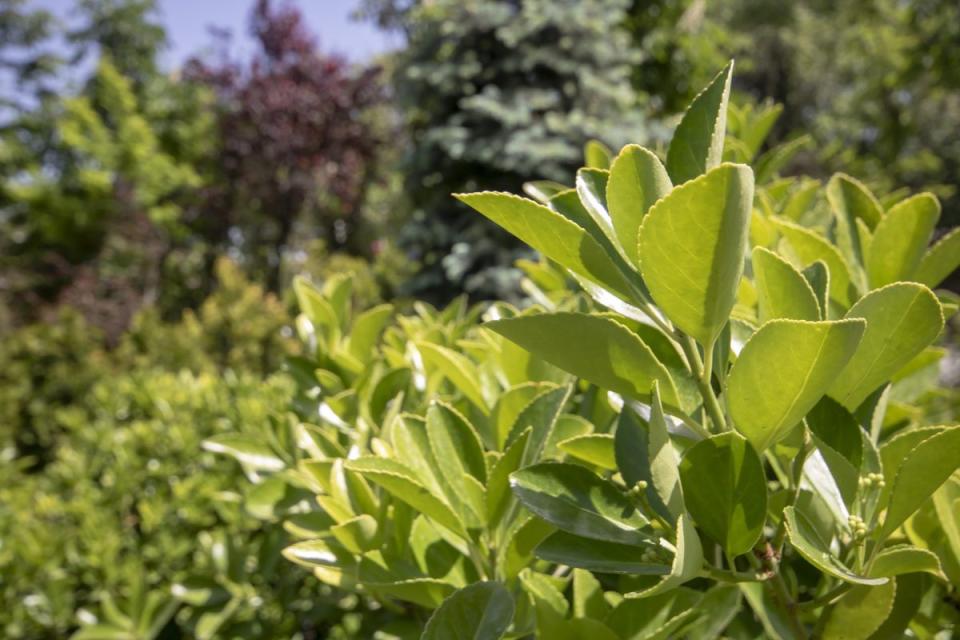
Nandina
"Most folks look to the treetops for red in the fall, but if you're only looking up, you'll miss half of the fun," says Putnam. For scarlet-colored leaves and easy care, he suggests Obsession nandina. "Reaching a maximum height of 3-4 feet, this nandina is the perfect scale for a colorful mass planting or autumn container combination. Cool weather brings out the red hues on its new growth, and its evergreen leaves guarantee visual appeal even through the winter."
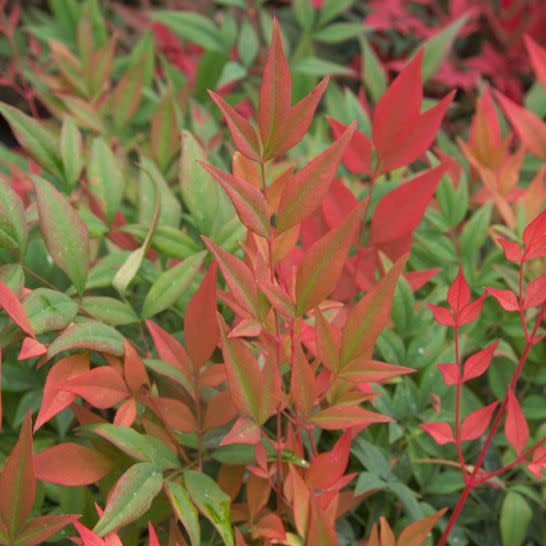
Blueberry
Both Putnam and Tamony agree the blueberry bush should be on any list of shrubs prized for their fall color. "Blueberries serve up sweet berries all summer long, then dish out a feast for the eyes in fall with gorgeous, dense red foliage," says Putnam. His variety of choice? The DownHome Harvest Hello Darlin' blueberry, which is a hardy grower in USDA Zones 7-9. "After yielding a generous crop of blueberries in the summer, Hello Darlin's green foliage shifts to a stunning scarlet red in September and October, making it a standout in fall landscapes," says Putnam. For even more heat-tolerance, Tamony suggests Bountiful Delight blueberry, which is suitable for USDA Zones 8-10. "With beautiful foliage and a compact habit, Bountiful Delight creates a stunning shrub," Tamony offers. "Its new growth is bright red and transitions to a glossy green with leaves taking on a red hue in the fall."

Holly
"No fall landscape would be complete without a triumphant golden yellow," says Putnam. His pick is the Golden Oakland holly, which features an upright shape that can reach a towering 15-20 feet high, though it can be kept to a more manageable size in a container, where you can make the most of its easy care. It works well in full sun to partial shade in USDA Zones 6-9.
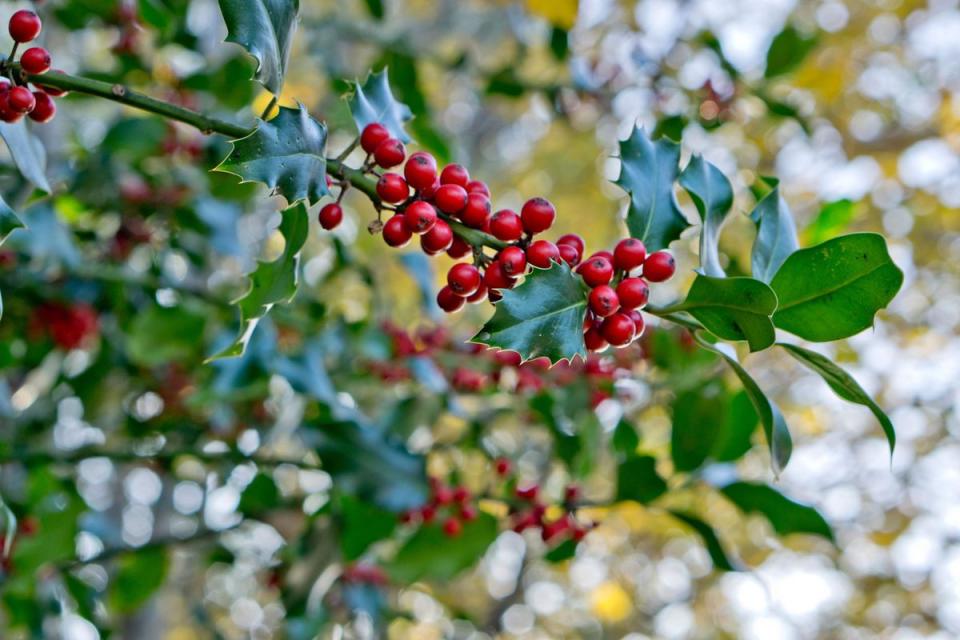
Loropetalum
"If you've ever wondered what the lively purple-leafed shrubs in your neighborhood are called, it's likely that they're loropetalum," says Putnam. "Evergreen with a shower of delicate clusters of flowers in spring, purple-hued loropetalum varieties offer stunning contrast to your trees' autumn-time reds, oranges, and yellows." Some might avoid loropetalum due to their staggering size, but compact options like Purple Daydream make the ideal choice. "With dark purple leaves year-round, it's the perfect pick for cold weather color in the landscape," suggests Tamony. It grows in USDA Zones 7-10 reaching 2-3 feet high by 3-4 feet wide.
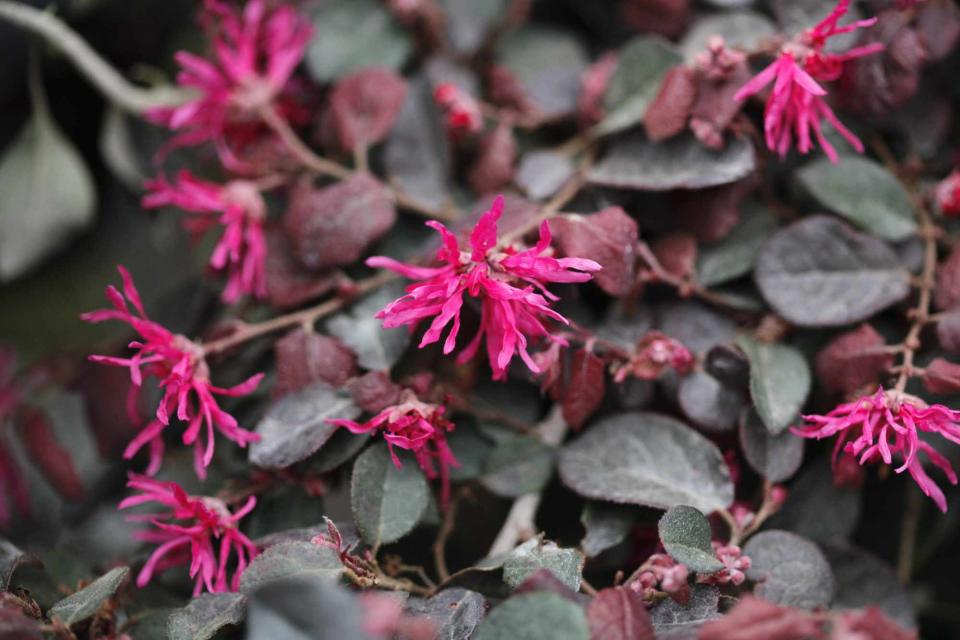
Abelia
Abelias continue to grow in popularity thanks to new compact varieties as well as their deer-resisting and butterfly-attracting skills. "Abelias are superstars of the Southern landscape. Beloved for their drought and heat tolerance, attractive to pollinators and incredibly easy to care for, abelias are practical and visually appealing," says Putnam. Select a variety like Kaleidoscope for its foliage that puts on a multicolor show throughout the year, starting yellow in the spring and evolving into a brilliant orange-red during the autumn. It performs best in part-sun to shade in USDA Zones 6-9.
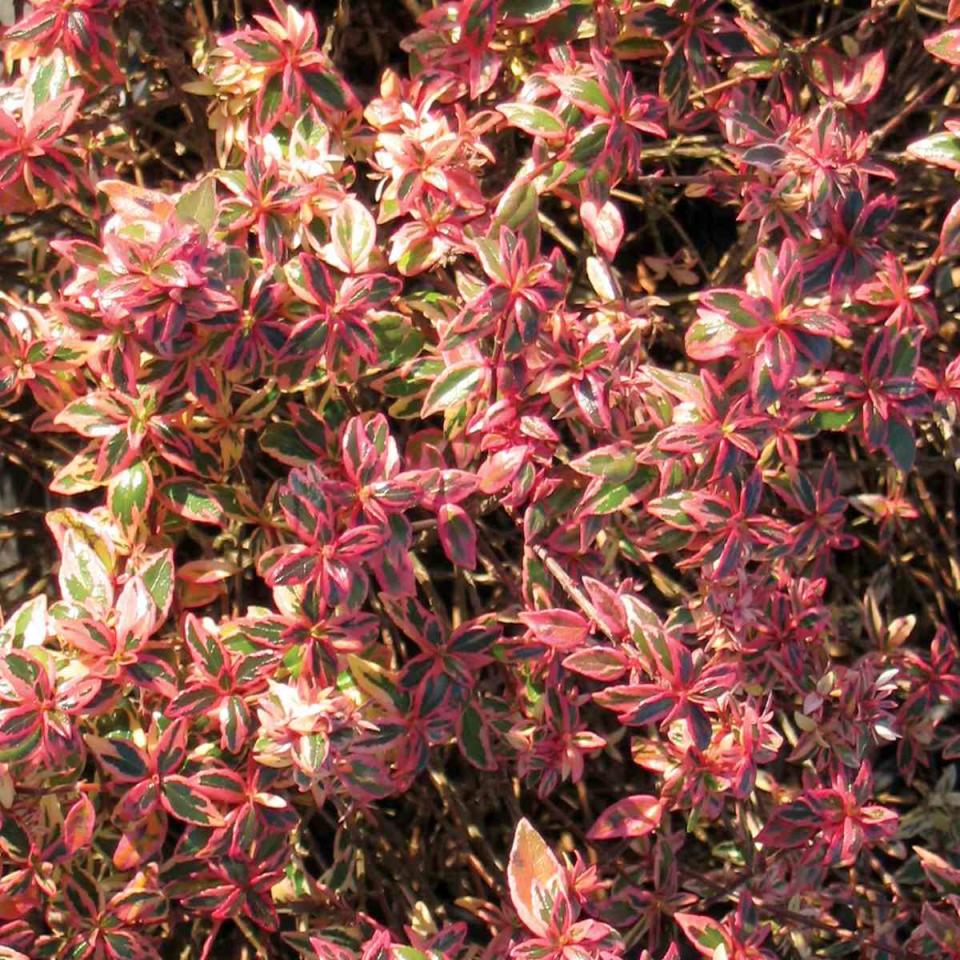
Azalea
Don't just think of azaleas when it comes to their gorgeous and abounding blossoms. "The saturated pink blooms of the sun-tolerant Autumn Empress live up to their name, glowing amidst the orange, red, and yellow fall foliage," says Putnam. It blooms profusely during the springtime, a characteristic of all Encore Azaleas, with a second show of double blooms in the fall. "As winter approaches, Autumn Empress' deep green foliage will take on a bronze hue that shines until spring's new growth returns," Putnam says. Plant in USDA Zones 6-10.

Spirea
Easy to grow and low maintenance once established, spirea are a popular choice among home gardeners. For brilliant fall color, Tamony suggests looking to Butterscotch Baby spirea. "New growth emerges a warm, caramel-butterscotch that transitions to a bright chartreuse green in summer," she says. Bright pink flowers will emerge, making the green foliage even that more captivating, though the rich, caramel-red foliage will return come fall. "Butterscotch Baby keeps a very compact, mushroom- cap like habit growing only 1.5 feet high and 2 feet wide," Tamony says. It requires full sun and is best suited for USDA Zones 4-9.


